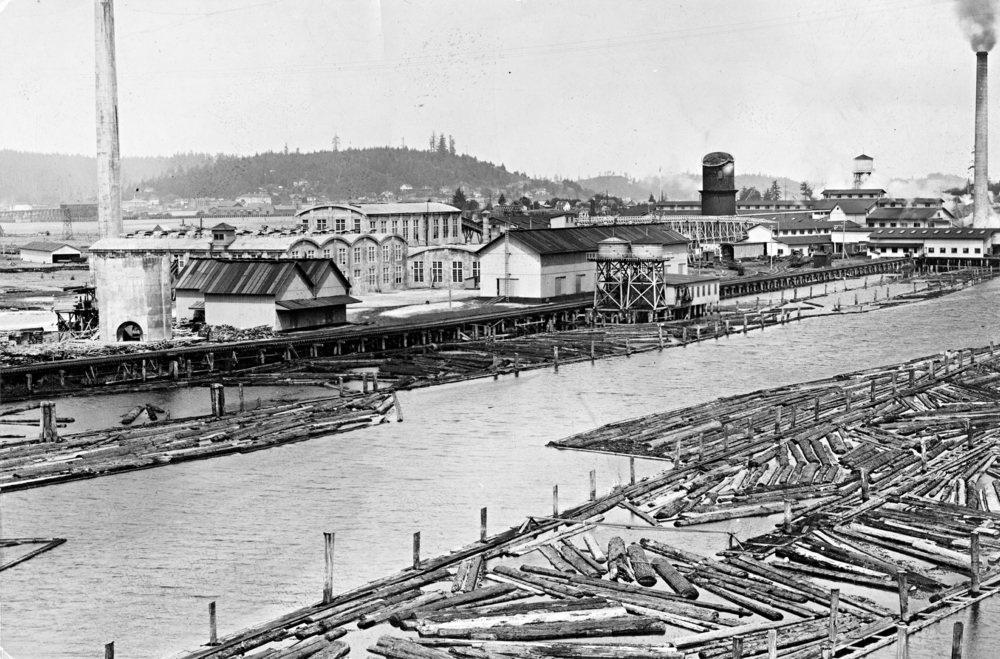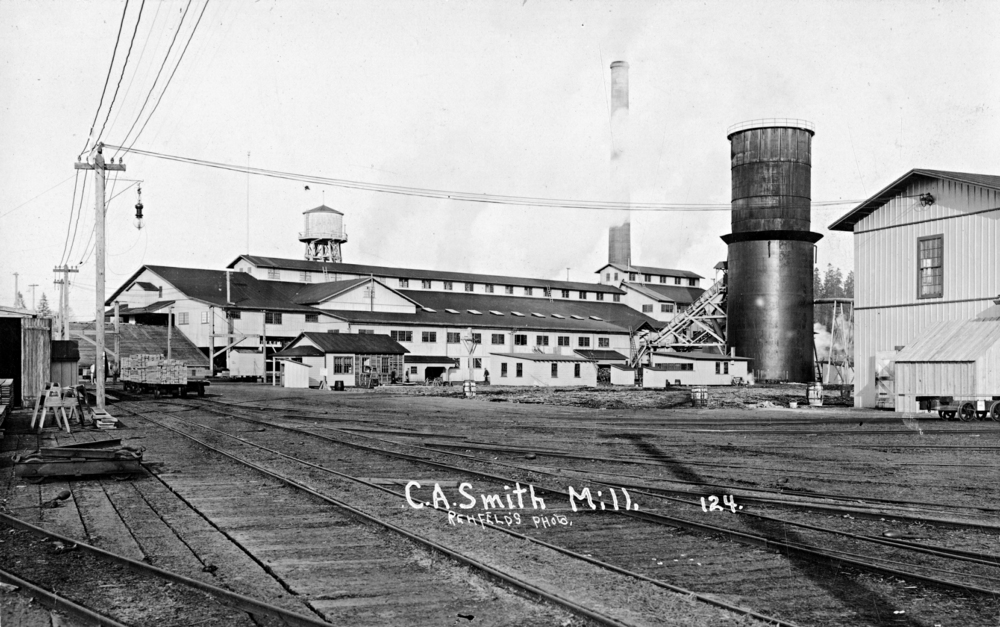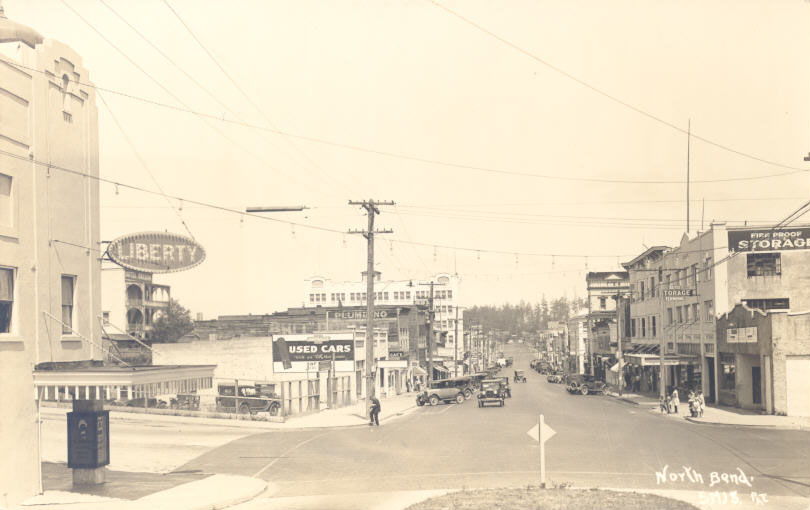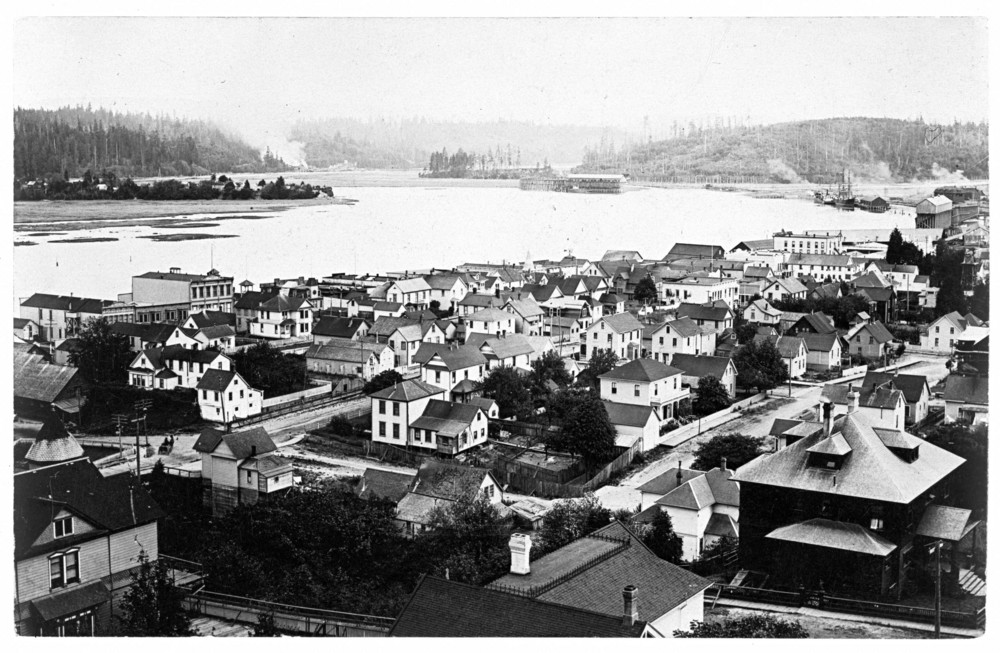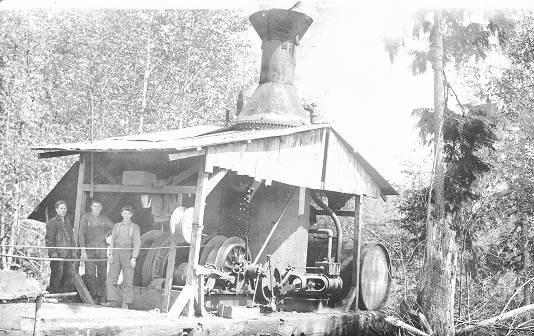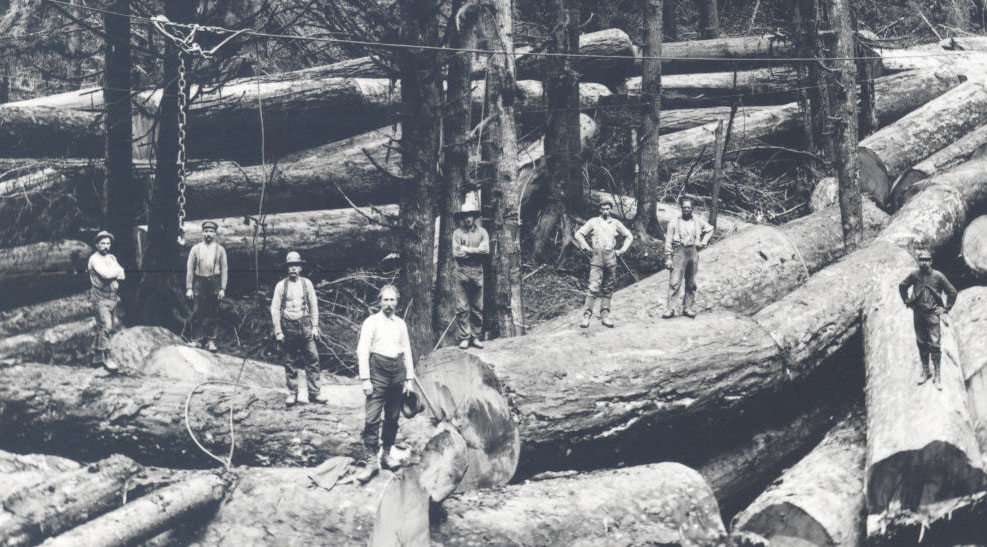Charles Axel Smith became, for a time, one of Oregon's most powerful lumbermen, buying up huge tracts of forest land and developing the largest mill on Coos Bay. A native of Sweden, Smith emigrated to the U.S. to become one of Minnesota's leading lumbermen by the late nineteenth century. With his company's timber stands rapidly being cut over, Smith and other lumbermen in the upper Midwest began purchasing—through legal and illegal means—stands of virgin forests in the Pacific Northwest. C. A. Smith's agents used dummy entrymen to fraudulently file claims to 160-acre tracts of timber and then transferred those titles to the Smith interests. The Oregonian reported in 1907 that with the transfer of the titles to the C. A. Smith Lumber Company, "the timberland owned by that concern reaches about 300,000 [acres]."
While his timber locators were identifying timberland and blocking-up an enormous forested estate, C. A. Smith sent seven Minnesota millwrights to Marshfield (now Coos Bay) to design and lay plans for a huge state-of-the-art sawmill. Still other Minnesotans descended on Coos Bay to set up logging camps and to ready a transportation system to supply the mill with logs. The "Big Mill," the envy of lumber manufacturers far and wide, established a reputation as Coos Bay's largest employer from the time it began sawing timber on February 29, 1908, until the Weyerhaeuser Company opened a big mill of its own in 1951 in nearby North Bend. The C. A. Smith operation was a fully integrated network of production, with miles of logging railroads, several logging camps, booming and rafting facilities, waterfront docks for loading lumber, and company ships to transport rough-cut lumber to the company's finishing facilities at Bay Point, California.
Initially, the C. A. Smith Company employed 250 workers in the Big Mill and another 350 in seven large logging camps. Before the end of the first year, the firm added a second ten-hour shift to its manufacturing facility, pushing its production to a prodigious 500,000 board feet a day. With the combined output of the "Big Mill" and a renovated mill nearby, the company boosted its cut to more than 600,000 feet daily by 1912. The firm also installed a modern electric generator to power two huge cranes to load large slings of lumber aboard ships. When the mills were going full steam, the seven logging camps used some forty donkey engines (yarding machines) to haul logs out of the woods.
Like many of his lumber industry peers, Charles Axel Smith was overextended; with heavy capital expenditures for expansion, the indebtedness on its timberlands, and the expenses of building logging railroads, the C. A. Smith Company ran into trouble when perpetually glutted markets produced low lumber prices. Smith sold off some of his vast timber holdings; then in 1916, a creditors' committee reorganized the properties under a new corporate name, the Coos Bay Lumber Company. From that point forward, investors in San Francisco and Chicago controlled the old Smith empire on Coos Bay.
-
![C.A. Smith Lumber Co., Coos Bay]()
C.A. Smith Lumber Co., Coos Bay.
C.A. Smith Lumber Co., Coos Bay Oregon Historical Society Research Library OrHi 8291
-
![]()
C.A. Smith Lumber Co., Coos Bay.
Oregon Historical Society Research Library ba012056
Related Entries
-
![City of North Bend]()
City of North Bend
The City of North Bend is located on about five square miles at the nor…
-
![Coos Bay]()
Coos Bay
The Coos Bay estuary is a semi-enclosed, elongated series of sloughs an…
-
![Donkey engine]()
Donkey engine
A donkey engine was an integrated machine consisting of a powerplant an…
-
![Louis J. Simpson (1877-1949)]()
Louis J. Simpson (1877-1949)
Louis Jerome Simpson was a civic-minded Oregonian who served the south …
-
![Timber Industry]()
Timber Industry
Since the 1880s, long before the mythical Paul Bunyan roamed the Northw…
Related Historical Records
Map This on the Oregon History WayFinder
The Oregon History Wayfinder is an interactive map that identifies significant places, people, and events in Oregon history.
Further Reading
Emil R. Peterson and Alfred Powers. A Century of Coos and Curry. Portland: Binfords and Mort, 1952.
Nathan Douthit, Coos Bay Region, 1890-1944. Coos Bay: River West Books, 1981.
Victor Stevens, The Powers Story. North Bend: Wegford Publications, 1979.
William G. Robbins, Hard Times in Paradise: Coos Bay, Oregon, Revised Edition. Seattle: University of Washington Press, 2006.

